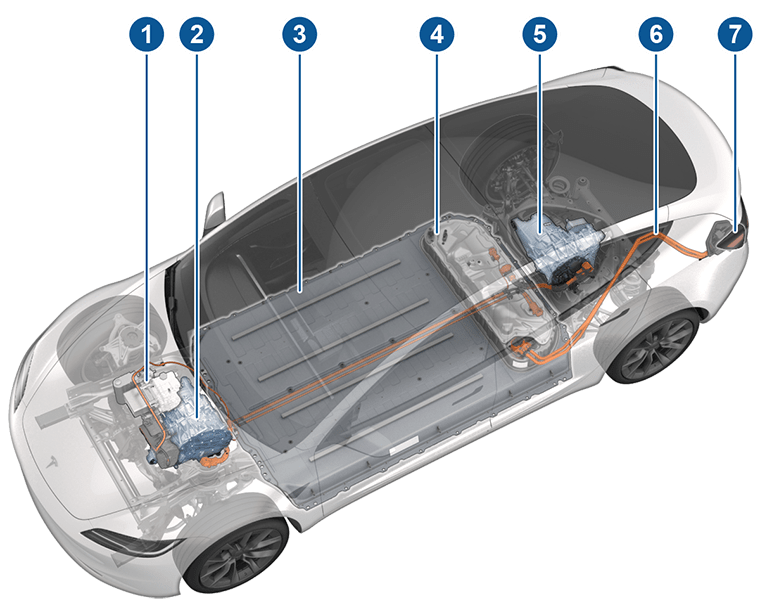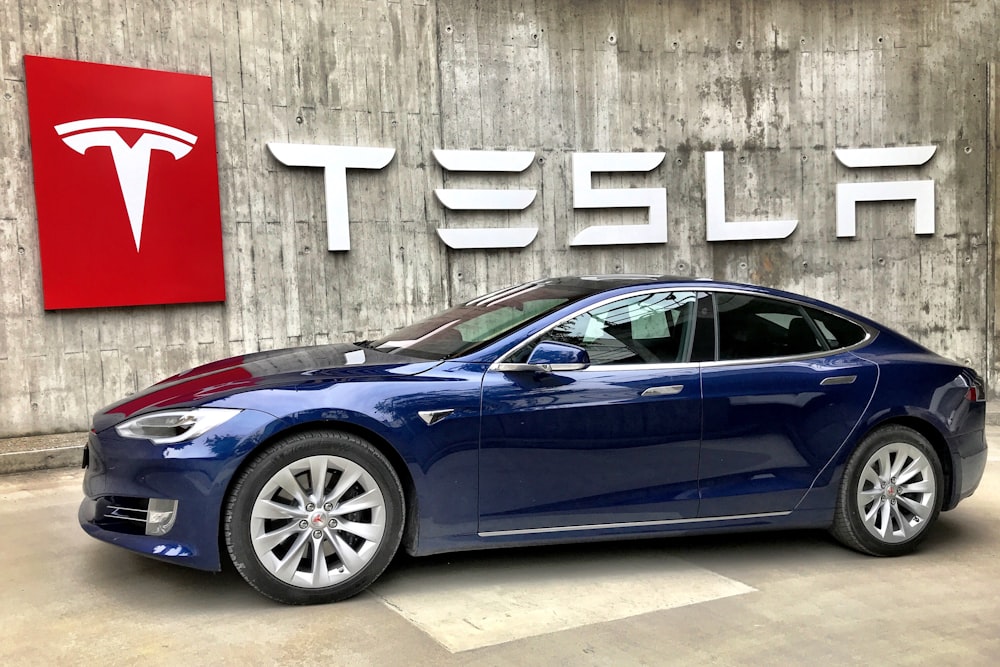Carbon-Free Energy: A Clean Future Unleashed
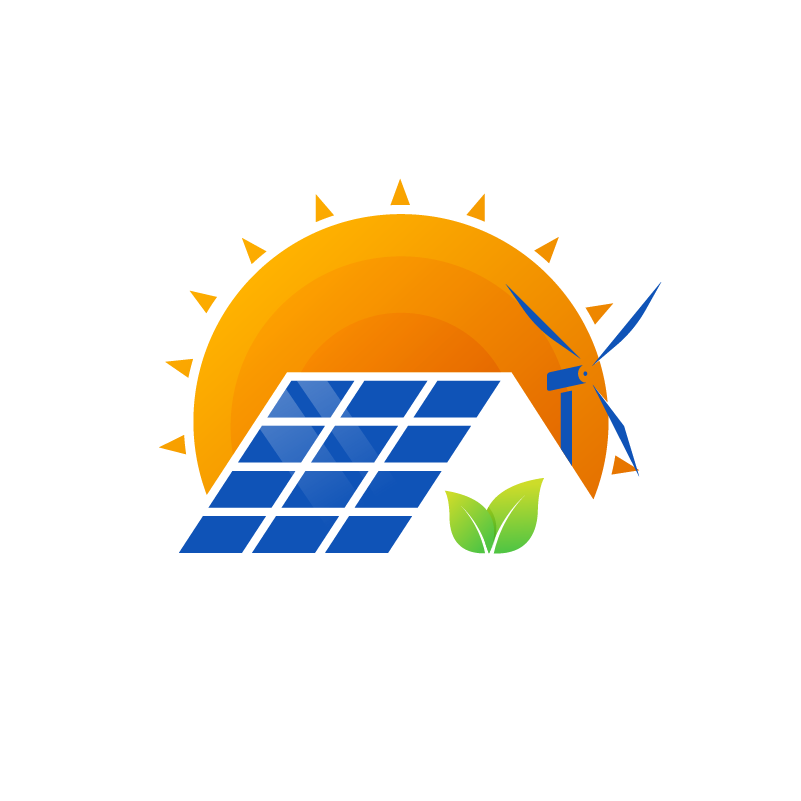
Carbon-Free Energy: A Clean Future Unleashed
The pursuit of carbon-free energy heralds a new era in our collective journey towards environmental sustainability. Explore the benefits and transformative potential of adopting carbon-free energy solutions, paving the way for a cleaner and greener future.
1. The Urgency of Carbon-Free Energy
Amidst growing environmental concerns, the urgency to transition to carbon-free energy sources has never been more apparent. The combustion of fossil fuels releases carbon dioxide, a major contributor to climate change. Carbon-free energy represents a critical solution to mitigate the impact of greenhouse gas emissions on our planet.
2. Renewable Energy as the Cornerstone
At the heart of carbon-free energy lies the utilization of renewable sources such as solar, wind, and hydropower. Unlike traditional energy sources, these renewables produce electricity without emitting carbon dioxide. Harnessing the power of nature, renewable energy becomes the cornerstone of a carbon-free future.
3. Environmental Stewardship and Sustainability
Embracing carbon-free energy is a declaration of environmental stewardship. By opting for renewable sources, individuals and businesses actively contribute to global sustainability efforts. The reduction of carbon emissions fosters a healthier planet and safeguards natural ecosystems, ensuring a sustainable legacy for future generations.
4. Economic Opportunities in Carbon-Free Energy
The shift towards carbon-free energy not only benefits the environment but also creates economic opportunities. The renewable energy sector generates jobs in manufacturing, installation, and maintenance of clean energy infrastructure. Investing in carbon-free technologies stimulates economic growth and innovation.
5. Technological Innovations Driving Carbon-Free Solutions
Technological innovations play a pivotal role in driving carbon-free solutions. Breakthroughs in energy storage, smart grid systems, and advanced materials enhance the efficiency and reliability of renewable energy sources. These innovations make carbon-free energy more accessible, reliable, and scalable.
6. Energy Independence through Carbon-Free Solutions
Carbon-free energy solutions offer a pathway to energy independence. By reducing reliance on finite fossil fuels and embracing locally sourced renewables, nations can enhance their energy security. Energy independence promotes resilience and stability in the face of global energy challenges.
7. Carbon-Free Transportation Revolution
Transportation is a significant contributor to carbon emissions. The advent of electric vehicles (EVs) and advancements in sustainable transportation technologies mark a revolution in achieving carbon-free mobility. Electrifying transportation reduces carbon footprints and aligns with the broader goal of a carbon-free future.
8. Smart Cities and Carbon-Free Living
Smart city initiatives leverage technology to create sustainable, livable urban environments. Incorporating carbon-free energy solutions into city planning enhances energy efficiency, reduces pollution, and improves the overall quality of life for residents. Smart cities represent a model for carbon-free living on a larger scale.
9. Policy Support and Government Initiatives
Government support is crucial for the widespread adoption of carbon-free energy. Policymakers play a pivotal role in creating favorable conditions through incentives, regulations, and research funding. Government initiatives can accelerate the transition to a carbon-free energy landscape.
10. Carbon-Free Energy Benefit: A Call to Action
In conclusion, embracing carbon-free energy is not just a choice; it’s a call to action for individuals, businesses, and governments worldwide. The benefits extend beyond mitigating climate change, encompassing economic growth, technological advancements, and improved quality of life. Explore the transformative potential of Carbon-Free Energy Benefit at solarhelp.info and join the movement towards a cleaner, greener future.
Cost-Saving Investment Benefit: Embrace Financial Efficiency

Cost-Saving Investment Benefit: Embrace Financial Efficiency
In today’s economic landscape, making wise investment choices is crucial. Discover the inherent advantages of cost-saving investments, particularly in the realm of sustainable energy solutions like solar power. Uncover how embracing these investments not only benefits your wallet but also contributes to a more sustainable and eco-friendly future.
The Financial Efficiency of Solar Power
Investing in solar power is more than a commitment to environmental sustainability; it’s a savvy financial move. Solar panels enable you to generate your own electricity, reducing reliance on traditional utility providers. Over time, the cost savings on energy bills often outweigh the initial investment, making solar power an economically efficient choice.
Long-Term Savings and Return on Investment
One of the primary benefits of a cost-saving investment in solar power is the long-term savings it offers. While the upfront costs may vary, the return on investment becomes evident as energy bills decrease. In many regions, government incentives, tax credits, and rebates further enhance the financial attractiveness of solar installations, maximizing the potential for savings.
Reducing Energy Bills and Increasing Home Value
By harnessing solar power, homeowners experience a significant reduction in energy bills. Solar panels generate electricity, allowing you to rely less on grid-supplied power. This reduced dependence translates into lower monthly bills. Additionally, studies show that homes with solar installations tend to have higher resale values, offering a dual benefit of energy savings and increased property worth.
Government Incentives and Subsidies
Governments worldwide recognize the importance of transitioning to sustainable energy sources. Many offer incentives and subsidies to encourage individuals and businesses to invest in solar power. These government programs can significantly offset the initial costs of installation, making solar energy a financially attractive option for a broader range of people.
Net Metering: Selling Excess Energy Back to the Grid
Net metering is a key aspect of the cost-saving benefits of solar power. This system allows homeowners to sell excess energy generated by their solar panels back to the grid. This not only contributes to the overall energy supply but can also result in credits or payments from utility providers, further enhancing the financial benefits of solar power.
Economic Resilience and Energy Independence
Investing in solar power contributes to economic resilience and energy independence. By generating your own electricity, you insulate yourself from fluctuations in utility prices. This independence is particularly valuable during times of energy market volatility or unforeseen economic challenges, providing stability and predictability in your energy costs.
Environmental and Social Responsibility
Beyond financial benefits, a cost-saving investment in solar power aligns with environmental and social responsibility. Solar energy is a clean and sustainable alternative to traditional fossil fuels, reducing harmful emissions and minimizing environmental impact. Choosing solar power is a tangible way to contribute to a healthier planet and a more sustainable future for all.
Technological Advances and Cost Reductions
Technological advancements in solar power have led to increased efficiency and decreased costs. The evolution of solar panel technology makes current installations more efficient than ever before. Ongoing innovations promise even more cost reductions, ensuring that solar power remains an economically viable and accessible option for individuals and businesses alike.
Educational Initiatives for Informed Decision-Making
To fully realize the cost-saving benefits of solar power, individuals need access to information and education. Educational initiatives play a crucial role in informing consumers about the financial advantages of solar installations. Workshops, campaigns, and community outreach programs empower individuals to make informed decisions that align with both their financial goals and environmental values.
Cost-Saving Investment Benefit at SolarHelp.info
For those considering the cost-saving investment benefit of solar power, SolarHelp.info provides valuable resources and insights. Explore the possibilities of solar installations, learn about government incentives, and discover how sustainable choices can lead to financial efficiency. Take the first step toward a cost-saving investment in your energy future.
Clean Tech: Unveiling the Environmental and Economic Benefits
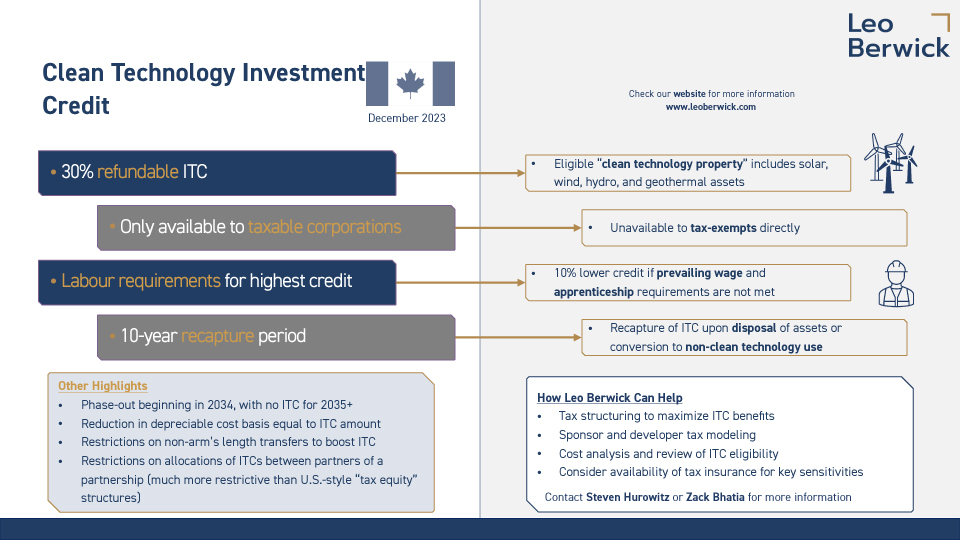
Unveiling the Revolution: Clean Technology Benefit Explored
Clean technology, often referred to as clean tech, has emerged as a powerful force in shaping a sustainable and environmentally friendly future. This article delves into the myriad benefits of clean technology, examining its impact on both the environment and the economy.
Environmental Sustainability at its Core
At the heart of clean technology is a commitment to environmental sustainability. Clean tech solutions aim to reduce environmental impact by minimizing resource consumption, lowering emissions, and promoting energy efficiency. From renewable energy sources to waste reduction initiatives, clean technology is driving a shift towards a greener and healthier planet.
Harnessing Renewable Energy for Power
One of the key pillars of clean technology is the utilization of renewable energy sources. Solar, wind, hydro, and geothermal power are harnessed to generate electricity without relying on finite fossil fuels. The shift towards renewable energy not only mitigates climate change but also fosters energy independence and resilience.
Energy Efficiency: Doing More with Less
Clean technology emphasizes energy efficiency as a cornerstone principle. Technologies and practices that enable doing more with less energy help reduce overall consumption and environmental impact. From energy-efficient appliances to smart grid systems, clean tech innovations are optimizing energy use across various sectors.
Circular Economy: Reducing Waste, Maximizing Resources
Clean technology promotes the concept of a circular economy, where waste is minimized, and resources are maximized through recycling and reuse. Innovative waste-to-energy solutions, sustainable materials, and eco-friendly manufacturing processes contribute to a more circular and responsible approach to resource management.
Smart Cities for Sustainable Living
The concept of smart cities is a testament to the transformative power of clean technology. Integrated systems, IoT (Internet of Things) connectivity, and data analytics enable cities to optimize resource use, enhance public services, and reduce environmental impact. Clean tech is at the forefront of creating urban spaces that prioritize sustainability and livability.
Clean Transportation: Reducing Carbon Footprint
Clean technology is revolutionizing the transportation sector, aiming to reduce the carbon footprint of vehicles. Electric vehicles (EVs), efficient public transportation systems, and alternative fuels contribute to cleaner air and a reduction in greenhouse gas emissions. The adoption of clean transportation is a significant step towards sustainable mobility.
Economic Growth and Job Creation
Beyond environmental benefits, clean technology is a driver of economic growth and job creation. Investments in renewable energy projects, clean infrastructure, and sustainable practices create employment opportunities and stimulate economic development. The clean tech sector is becoming a crucial contributor to a thriving and resilient economy.
Innovation and Research Advancements
The continuous evolution of clean technology is fueled by innovation and research advancements. Ongoing research in areas such as energy storage, sustainable materials, and green chemistry paves the way for breakthroughs that enhance the efficiency and effectiveness of clean tech solutions. Innovation remains a key driver for realizing the full potential of clean technology.
Global Collaboration for Climate Action
Clean technology plays a pivotal role in global efforts to address climate change. International collaboration and partnerships are crucial for sharing knowledge, resources, and technologies that promote a cleaner and more sustainable future. Clean tech solutions contribute to achieving climate goals and building a resilient planet for future generations.
Clean Technology Benefit: A Call to Action
In conclusion, the clean technology benefit extends far beyond environmental considerations. It is a catalyst for positive change, driving economic growth, technological innovation, and global collaboration. To explore more about the clean technology benefit and its transformative potential, visit Clean Technology Benefit for valuable insights and resources. Join the clean tech revolution and be part of building a sustainable and prosperous future.
Sustainable Living: Low Environmental Impact Strategies
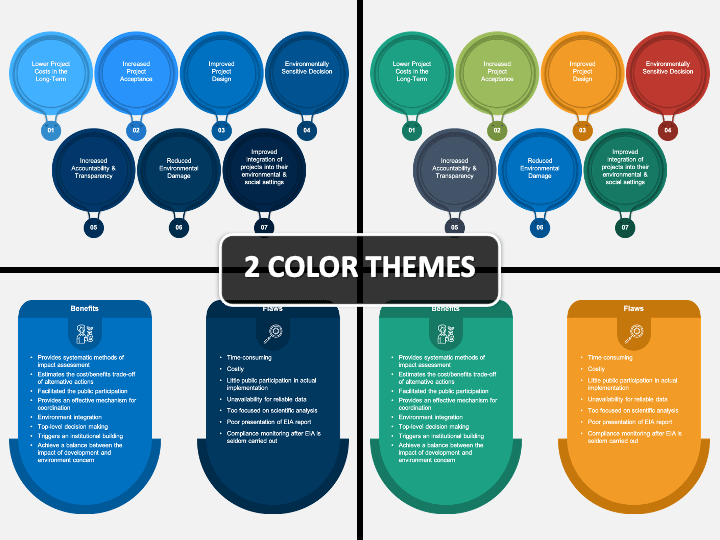
Navigating a Sustainable Path: Low Environmental Impact Benefit
In an era where environmental consciousness is paramount, understanding and adopting strategies with low environmental impact becomes imperative. This article explores the various benefits associated with minimizing environmental footprints, fostering a greener and more sustainable future.
The Essence of Low Environmental Impact Living
Low environmental impact living involves making choices that reduce the negative effects on the environment. From daily habits to large-scale decisions, every aspect of our lives can contribute to or alleviate environmental impact. This conscious lifestyle is essential for preserving natural resources, biodiversity, and mitigating climate change.
Reducing Carbon Footprints for Climate Mitigation
One of the primary benefits of low environmental impact living is the reduction of carbon footprints. Carbon footprints, largely attributed to activities like energy consumption and transportation, contribute to climate change. By embracing sustainable practices, individuals can actively participate in mitigating climate change and preserving the planet for future generations.
Sustainable Transportation Choices for Greener Commutes
Transportation plays a significant role in environmental impact. Opting for sustainable transportation choices, such as electric vehicles, public transport, or cycling, reduces reliance on fossil fuels and minimizes air pollution. These choices not only benefit the environment but also contribute to personal well-being through healthier commuting options.
Energy Efficiency: A Pillar of Low Environmental Impact Living
Embracing energy efficiency is a cornerstone of reducing environmental impact. Simple measures like using energy-efficient appliances, properly insulating homes, and adopting renewable energy sources contribute to lower energy consumption. This not only lowers utility bills but also aligns with a commitment to sustainable and responsible living.
Renewable Energy Adoption for Clean Power
Harnessing renewable energy sources like solar and wind power significantly reduces reliance on traditional fossil fuels. By adopting clean energy solutions, individuals contribute to a healthier planet and support the transition towards a more sustainable energy infrastructure. Explore more about renewable energy adoption at Low Environmental Impact Benefit for a comprehensive guide.
Eco-Friendly Practices in Daily Living
Incorporating eco-friendly practices into daily life amplifies the benefits of low environmental impact living. This includes reducing waste through recycling, composting organic materials, and choosing products with minimal packaging. These practices contribute to a circular economy and help conserve resources.
Sustainable Food Choices for a Healthier Planet
The food we consume has a significant impact on the environment. Adopting sustainable food choices, such as supporting local and organic produce, reduces the environmental impact of the agricultural industry. Additionally, minimizing food waste through mindful consumption is essential for sustainable living.
Conservation of Water Resources for Responsible Living
Water is a precious resource, and low environmental impact living involves its responsible use. Conserving water through practices like fixing leaks, using water-efficient appliances, and practicing mindful water usage in daily activities contributes to the sustainability of water resources.
Promoting Biodiversity through Responsible Land Use
Responsible land use is crucial for preserving biodiversity and ecosystems. Low environmental impact living involves making conscious choices about land use, avoiding deforestation, and supporting initiatives that prioritize conservation and restoration of natural habitats.
Educational Initiatives for a Greener Tomorrow
Educating oneself and others is a pivotal aspect of low environmental impact living. Understanding the interconnectedness of our actions with the environment enables informed decision-making. Educational initiatives, both at individual and community levels, play a vital role in promoting awareness and fostering a collective commitment to sustainability.
Low Environmental Impact Benefit: A Link to a Sustainable Future
In conclusion, embracing low environmental impact living is not just a personal choice; it’s a collective responsibility towards a sustainable future. By minimizing our ecological footprints, we contribute to a healthier planet for current and future generations. Explore more about the Low Environmental Impact Benefit at SolarHelp.info and embark on a sustainable journey that prioritizes environmental well-being.
Optimizing Expenses: Cost-Efficiency Benefits Unveiled

Unlocking Financial Potential: Cost-Efficiency Benefit Explored
In the pursuit of financial stability and sustainability, understanding the nuances of cost-efficiency becomes paramount. This article delves into the multifaceted benefits of cost-efficiency, exploring how individuals, businesses, and communities can optimize their resources and foster economic well-being.
Navigating the Economic Landscape with Cost-Efficiency
Cost-efficiency involves achieving the maximum output with the minimum input, a concept fundamental to economic success. In business, it means streamlining operations, minimizing waste, and maximizing productivity. For individuals, it translates to prudent financial decisions that lead to savings and improved financial resilience.
Strategic Resource Allocation for Businesses
Businesses thrive when resources are strategically allocated to yield the highest returns. Cost-efficiency strategies include lean operations, smart procurement, and effective inventory management. By optimizing these aspects, businesses can enhance their competitiveness, increase profitability, and adapt more readily to changing market conditions.
Personal Finance: The Art of Frugal Living
On an individual level, adopting a mindset of cost-efficiency in personal finance can be transformative. From budgeting and smart spending to embracing frugal living, individuals can stretch their income further, build savings, and attain financial goals. Cost-efficiency becomes a tool for financial freedom and achieving long-term aspirations.
Green Technology: A Double Win for Cost and Ecology
The adoption of green technology exemplifies the synergy between cost-efficiency and environmental sustainability. Businesses investing in energy-efficient technologies not only reduce operational costs but also contribute to a lower carbon footprint. Embracing eco-friendly practices aligns with cost-efficiency while fulfilling corporate social responsibility.
Energy Conservation: A Pillar of Cost-Efficiency
Energy consumption is a significant contributor to expenses for both households and businesses. Implementing energy conservation measures, such as upgrading to energy-efficient appliances and adopting sustainable practices, results in long-term cost savings. The pursuit of cost-efficiency in energy usage is synonymous with environmental stewardship.
Investing in Education for Long-Term Gains
Education is an investment with profound cost-efficiency implications. Individuals and societies benefit from investing in education as it enhances skills, employability, and overall well-being. Education equips individuals to make informed financial decisions, fostering a culture of responsible resource management.
Leveraging Technology for Streamlined Operations
In the digital age, leveraging technology is instrumental in achieving cost-efficiency. Automation, data analytics, and cloud computing streamline operations, reduce manual efforts, and enhance overall efficiency. Businesses embracing technological advancements gain a competitive edge by optimizing processes and improving decision-making.
Remote Work: Balancing Productivity and Cost Savings
The rise of remote work is a testament to the evolving landscape of cost-efficiency. For businesses, it translates to reduced overhead costs associated with office spaces. Employees benefit from savings on commuting expenses and enjoy improved work-life balance. Remote work exemplifies how modern solutions can align with cost-effective and productive outcomes.
Community Initiatives: Collective Cost-Efficiency
Cost-efficiency extends beyond individual and business realms to community initiatives. Collaborative efforts, resource sharing, and community-driven projects contribute to collective cost-efficiency. Shared resources, from community gardens to local co-working spaces, exemplify how communities can thrive by optimizing shared assets.
Conclusion: Cost-Efficiency as a Catalyst for Prosperity
In conclusion, understanding and embracing cost-efficiency is a catalyst for individual, business, and community prosperity. From strategic resource allocation and green technology adoption to personal finance strategies and leveraging technology, the benefits are vast. To explore more about cost-efficiency and its transformative potential, visit Cost-Efficiency Benefit for valuable insights and resources. Unleash the power of cost-efficiency for financial resilience and sustainable growth.
Fueling Prosperity: The Economic Growth Advantage
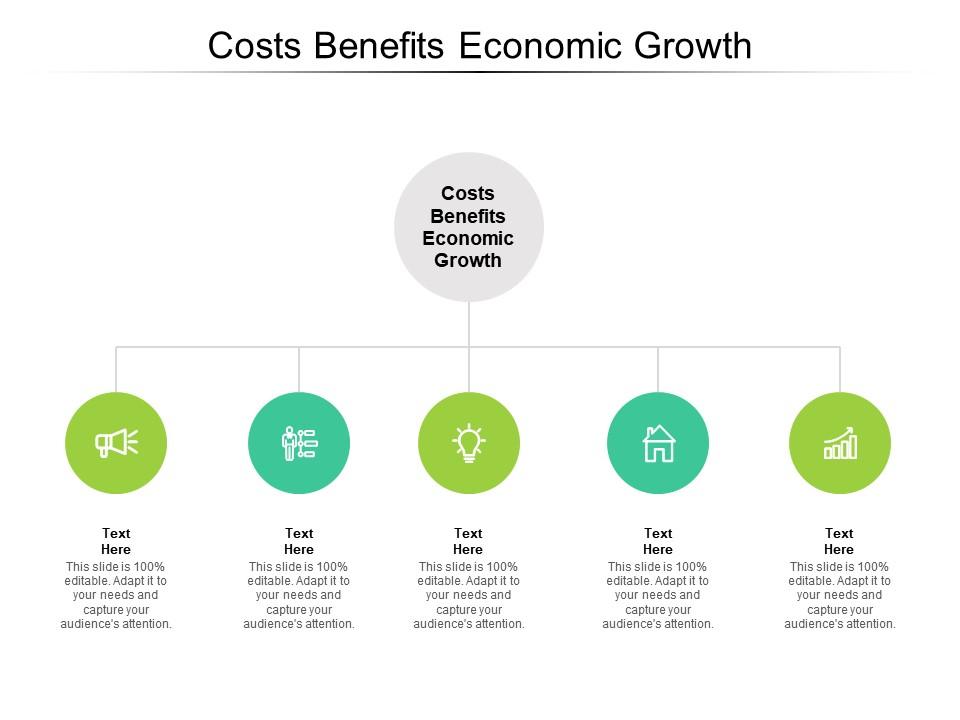
Fueling Prosperity: Unveiling the Economic Growth Advantage
In the quest for sustainable development, the nexus between economic growth and environmental responsibility has gained prominence. This article explores the Economic Growth Benefit associated with environmentally conscious practices, shedding light on how fostering sustainability can fuel prosperity for nations, businesses, and individuals.
1. The Interplay Between Economic Growth and Sustainability
Economic growth and sustainability are not mutually exclusive; in fact, they are intricately connected. The Economic Growth Benefit of embracing sustainable practices lies in creating a balance that ensures economic development without compromising the environment. Nations and businesses worldwide are increasingly recognizing the potential for a win-win scenario where economic prosperity and environmental responsibility go hand in hand.
2. Job Creation and Economic Diversification: A Ripple Effect
One of the key aspects of the Economic Growth Benefit is the creation of jobs and the diversification of the economy. Sustainability initiatives, such as investments in renewable energy, green technologies, and eco-friendly practices, often lead to the establishment of new industries. This, in turn, results in job creation and a more diversified economic landscape, fostering resilience against economic downturns.
Economic Growth Benefit: Discover the symbiotic relationship between economic prosperity and sustainability at Economic Growth Benefit. Learn how environmentally conscious practices can drive economic development.
3. Innovation and Technological Advancement: Catalysts for Growth
Embracing sustainability acts as a catalyst for innovation and technological advancement. The necessity to find eco-friendly solutions to various challenges drives research and development in new technologies. These innovations not only contribute to environmental conservation but also open up new avenues for economic growth. Sustainable practices inspire creativity and ingenuity, fostering a culture of innovation within societies and industries.
4. Cost Savings Through Resource Efficiency: Boosting Profit Margins
Sustainable practices often go hand in hand with resource efficiency. Whether it’s minimizing waste, optimizing energy use, or adopting circular economy principles, businesses that prioritize sustainability tend to achieve cost savings. The reduction in resource consumption not only benefits the environment but also boosts profit margins, contributing to the Economic Growth Benefit.
5. Green Infrastructure Investments: Building for the Future
Governments and businesses are increasingly recognizing the importance of green infrastructure investments. These include projects related to renewable energy, energy-efficient buildings, public transportation, and more. The Economic Growth Benefit of such investments is twofold – immediate job creation during the construction phase and long-term economic gains through improved infrastructure that supports sustainable practices.
6. Enhanced Global Competitiveness: A Strategic Advantage
Nations that prioritize sustainability gain a strategic advantage in the global marketplace. The Economic Growth Benefit here lies in enhanced competitiveness. Sustainable practices, green certifications, and adherence to environmental standards can attract international investors and customers who are increasingly valuing environmentally responsible businesses and nations.
7. Resilience Against Climate Risks: Economic Stability
The Economic Growth Benefit extends to climate resilience. Sustainable practices mitigate the impact of climate change, reducing the risks associated with extreme weather events and environmental disruptions. This, in turn, contributes to economic stability by safeguarding critical infrastructure, supply chains, and livelihoods.
Conclusion: A Path to Sustainable Prosperity
In conclusion, the Economic Growth Benefit derived from sustainability is a powerful testament to the interconnectedness of economic development and environmental responsibility. By fostering job creation, economic diversification, innovation, resource efficiency, green infrastructure, global competitiveness, and resilience against climate risks, nations and businesses can pave the way for sustainable prosperity. The choice to embrace environmentally conscious practices is not just an ethical decision but a strategic one that holds the key to a resilient, thriving, and sustainable future.
Why Ethanol Is Good For Providing A Renewable Fuel Source
It is actually pretty easy to reduce the amount of energy and resources your home. This article provides several great ideas that you how to get started saving energy.
Solar panels can be an excellent investment for energy. There are a few things that should be further looked in to before installing them. The most important thing you need to consider is the amount of sun your home is exposed to sunlight.
Find out more about various energy solutions in your area.Compare the costs of various utilities, making sure to take into consideration any legislation with regard to energy costs that has recently been passed. You might be able to save money by switching to well water or another may provide a reduction in energy use and cost.
Turn off appliances if you aren’t using them. When you leave the room you should think about what is not in use, take the time to turn off lights, a television or your home theater. A power strip should be used for electronics and can be easily turned off when not needed, so consider placing one in a conspicuous place where many electronics are located.
Power can be lost over long cables so this way.
Tankless Heaters
Use a tankless water heater instead of a tank style heater. Tankless heaters still use electricity or gas to provide hot water, as they only heat it as needed. Tankless heaters can supply the entire house or a single faucet with hot water.
One of the best ways that you can go green and cut energy costs is by dressing warmly. A sweater that is heavy adds 4 more degrees of warmth, and a heavy sweater adds 4 degrees. You don’t need to be cold at home, so put on a sweater and increase your savings.
Pay attention to any federal or local rebates that may help you save money on renewable energy. Local utility companies often offer rebates or other assistance with upgrades.You may also get state and federal tax deductions from the government for making your upgrades. These tax savings can reduce the net cost associated to installing alternative energy technology considerably.
Try receiving as much as you can via email. In other words, try to be paperless all the time.
Avoid turning the heat up in your home unless it’s absolutely necessary. If you find the air a little chilly, put on a sweater or blanket instead. High heat use too much energy.
A solar oven can be an energy efficient way of baking. These can even be made yourself using items such as a box, box, and some tin foil. These ovens reach temperatures greater than 300 degrees, and they are simple to produce.
There is a lot you can do if you want reduce your environmental footprint on the planet.Lowering the temperature on your water heater to 120 can save energy as well. Every little thing you can do helps!
Incorporate the ideas you just read into your daily activities. You will be saving the environment and reducing your bills at the same time. Keep working at it a little at a time, and ultimately your home is going to be the greenest in your neighborhood! visit https://sanka7a.com/.…
Powering Homes Sustainably with Solar Panels

Powering Homes Sustainably with Solar Panels
The evolution of solar panel technology has transformed the way we power our homes, offering a sustainable and eco-friendly alternative to traditional energy sources. In this article, we will explore the benefits and considerations of creating a solar panel home, ushering in a new era of energy independence and environmental responsibility.
Harnessing Solar Power for Home Energy Needs
Solar panels are designed to harness sunlight and convert it into electricity, providing a clean and renewable energy source for homes. By installing solar panels on rooftops or in dedicated solar arrays, homeowners can generate a significant portion or even all of their electricity needs, reducing reliance on conventional power grids.
Reducing Carbon Footprints: Environmental Impact
One of the primary advantages of a solar panel home is its positive environmental impact. Solar energy is a clean and green power source that produces minimal carbon emissions compared to traditional fossil fuels. Choosing solar panels significantly contributes to reducing the carbon footprint associated with residential energy consumption, helping combat climate change.
Financial Savings through Solar Energy
Beyond its environmental benefits, transitioning to a solar panel home can result in substantial financial savings. The initial investment in solar panels is often offset by government incentives, tax credits, and the long-term reduction in energy bills. Over time, homeowners can experience a return on investment as they generate their electricity and decrease reliance on expensive grid power.
Energy Independence in Solar-Powered Homes
Solar-powered homes gain a degree of energy independence, reducing vulnerability to power outages and grid disruptions. With a solar panel home, you have the ability to generate and store your electricity, ensuring a continuous power supply even during adverse weather conditions or emergencies. This energy independence enhances overall resilience and security.
Elevating Property Value with Solar Panels
The presence of solar panels can elevate the value of a home in the real estate market. As more homebuyers prioritize sustainability and energy efficiency, a solar panel home becomes an attractive investment. Properties with solar installations not only stand out but also command higher prices, offering a tangible return on the initial investment.
Easy Maintenance and Long-Term Durability
Maintaining a solar panel home is relatively straightforward. Regular inspections, cleaning, and minimal upkeep ensure the system operates efficiently over its long lifespan, often exceeding 25 years. The durability and low maintenance requirements make solar panels a reliable and cost-effective solution for sustainable home energy.
Technological Advancements for Enhanced Efficiency
Ongoing technological advancements in solar panel technology continuously improve efficiency and affordability. Innovations in design and manufacturing processes lead to more cost-effective installations and increased energy output. Staying informed about these advancements empowers homeowners to benefit from the latest and most efficient solar technologies.
Creating a Greener Future for Communities
Embracing solar panels at the individual level contributes to a broader movement towards sustainability within communities. As more homes become solar-powered, the collective impact on reducing overall carbon emissions is significant. Creating a greener future starts with individual choices that collectively shape the environmental landscape.
Government Incentives and Support
Governments worldwide recognize the importance of transitioning to renewable energy sources. Many offer incentives, tax credits, and support programs to encourage homeowners to adopt solar panels. These initiatives make the transition to a solar panel home more financially viable and contribute to a global commitment to a cleaner, sustainable energy future.
SolarHelp.info: Your Guide to Solar Panel Homes
For comprehensive insights, guidance, and resources on creating a solar panel home, visit SolarHelp.info. Explore articles, tips, and expert advice to make informed decisions about harnessing the power of the sun for a sustainable and energy-efficient home. SolarHelp.info is your go-to resource for building a brighter and greener future through solar energy.
Innovating Home Energy: Solar Solutions for Modern Living

Revolutionizing Living Spaces: Solar Home Innovations
Solar home innovations are reshaping the way we approach energy consumption and sustainable living. This article explores cutting-edge technologies and innovations that leverage solar power to enhance comfort, efficiency, and environmental consciousness in modern homes.
Integrating Solar Panels into Architectural Design
Modern solar innovations go beyond traditional rooftop solar panels. Architects and designers are integrating solar panels seamlessly into the architecture of homes. Solar roof tiles, solar windows, and solar facades are becoming popular choices, allowing solar technology to blend harmoniously with the aesthetic appeal of the home.
Energy-Generating Smart Windows
Smart windows are a breakthrough in solar home innovations. These windows not only provide natural light but also harness solar energy. Some smart windows are equipped with transparent solar cells that generate electricity while allowing visible light to pass through. This innovation enhances energy efficiency and reduces reliance on artificial lighting.
Solar-Powered Home Automation Systems
Solar-powered home automation systems are transforming how we control and manage various aspects of our homes. From smart thermostats to solar-powered security cameras, these innovations leverage solar energy to operate efficiently. Solar-powered sensors and devices contribute to the sustainability of smart home ecosystems.
Solar Water Heating Solutions
Solar water heaters have been a longstanding solar innovation, but advancements in technology continue to improve their efficiency. Innovations such as solar water heating systems with integrated energy storage and smart controls optimize water heating processes, reducing energy consumption and lowering utility costs.
Solar-Powered HVAC Systems
Heating, ventilation, and air conditioning (HVAC) systems account for a significant portion of home energy usage. Solar-powered HVAC systems harness solar energy to heat or cool homes. These systems use solar collectors or solar panels to generate power, providing a sustainable and cost-effective alternative to conventional HVAC systems.
Portable Solar Solutions for Off-Grid Living
For those seeking off-grid living or exploring portable solar options, innovations like solar-powered generators and portable solar panels are game-changers. These devices allow homeowners to harness solar energy in remote locations or during power outages, providing a reliable source of clean energy.
Solar Energy Storage Solutions
Solar energy storage solutions, such as solar batteries, are crucial innovations for optimizing solar power usage. These batteries store excess energy generated during sunny periods for later use, ensuring a continuous power supply even during nighttime or cloudy days. This advancement enhances the reliability and independence of solar-powered homes.
Solar-Powered Outdoor Living Spaces
Innovations in solar-powered outdoor amenities enhance the sustainability of living spaces beyond the home’s interior. Solar-powered outdoor lighting, solar water features, and even solar charging stations for electric outdoor equipment contribute to creating eco-friendly and energy-efficient outdoor environments.
Educational Initiatives for Solar Literacy
Promoting solar literacy is essential for the widespread adoption of solar home innovations. Educational initiatives that inform homeowners about the benefits, installation processes, and long-term savings associated with solar technologies empower individuals to make informed decisions. Solar literacy fosters a greater understanding of the positive impact of solar innovations on both homes and the environment.
Embracing a Solar-Powered Future
In conclusion, solar home innovations represent a transformative shift towards a sustainable and efficient future. From integrated architectural design to smart home systems and outdoor amenities, the possibilities are expanding. Exploring and embracing these innovations not only enhances the functionality of homes but also contributes to a greener and more eco-conscious way of living. Learn more about Solar Home Innovations at SolarHelp.info for a comprehensive guide to integrating solar technologies into modern living spaces.
Dependable Home Drainage: Ensuring Seamless Water Flow
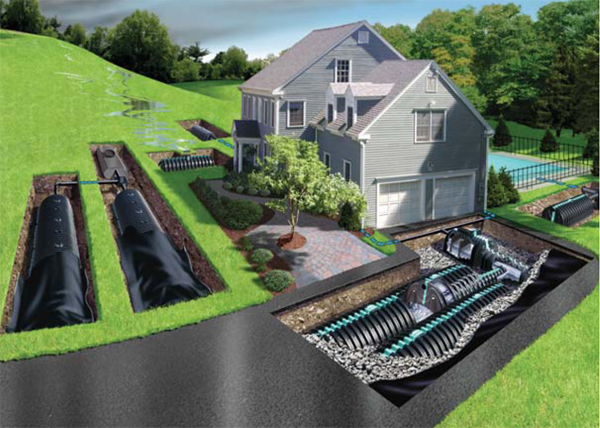
Uninterrupted Flow: The Essence of Reliable Home Drainage
Ensuring reliable home drainage is essential for maintaining a healthy and functional living space. This article explores the importance of reliable drainage systems, common issues homeowners may encounter, and proactive measures to guarantee a seamless flow of water within and around the home.
The Significance of Reliable Drainage
Reliable home drainage is fundamental to preventing water damage, flooding, and potential health hazards. A well-designed and properly maintained drainage system ensures that rainwater, wastewater, and other liquids are efficiently directed away from the home. This not only protects the structural integrity of the property but also safeguards the health and well-being of its occupants.
Identifying Common Drainage Issues
Understanding common drainage issues is the first step towards ensuring reliability. Issues such as clogged drains, poor slope grading, foundation cracks, and insufficient gutter systems can lead to water accumulation and drainage failure. Identifying these issues early on allows homeowners to address them before they escalate into more significant problems.
Clogged Drains: A Common Culprit
Clogged drains are a prevalent issue that can disrupt the reliability of home drainage. Hair, soap scum, grease, and debris often accumulate in pipes, causing slow drainage or complete blockages. Regular maintenance, such as using drain screens and environmentally friendly cleaning solutions, can prevent clogs and maintain the flow of water.
The Role of Proper Slope Grading
The slope grading around a home plays a crucial role in reliable drainage. An improper slope can lead to water pooling around the foundation, risking water seepage into basements and crawl spaces. Ensuring proper grading away from the home allows rainwater to flow away naturally, reducing the likelihood of water-related issues.
Foundation Cracks and Waterproofing
Foundation cracks can compromise the reliability of home drainage, allowing water to infiltrate the structure. Waterproofing measures, including sealing foundation cracks and applying exterior waterproof coatings, are essential for preventing water intrusion. Addressing foundation issues promptly is key to maintaining a dry and secure living space.
Gutter Systems for Efficient Water Management
An efficient gutter system is a linchpin of reliable home drainage. Gutters collect rainwater from the roof and direct it away from the foundation through downspouts. Regular gutter cleaning and maintenance prevent clogs, ensuring that water flows freely. Installing gutter guards further enhances the effectiveness of the gutter system.
Professional Inspection and Maintenance
Regular professional inspection and maintenance are integral to ensuring the reliability of home drainage systems. Certified inspectors can identify potential issues, assess the overall condition of drainage components, and recommend necessary repairs or improvements. Scheduled maintenance, including gutter cleaning and pipe inspections, prevents surprises and enhances system longevity.
Sustainable Landscaping for Drainage Harmony
Sustainable landscaping practices contribute to reliable home drainage. Choosing plants that absorb excess water, implementing rain gardens, and using permeable materials for pathways promote efficient water absorption. Thoughtful landscaping reduces runoff, preventing water from pooling and ensuring that drainage systems operate optimally.
Investing in Quality Drainage Solutions
Investing in quality drainage solutions is a proactive measure that pays off in the long run. High-quality materials for pipes, gutters, and downspouts, coupled with professional installation, enhance the reliability and durability of the drainage system. Homeowners should consider drainage as a critical component of overall property maintenance.
A Holistic Approach to Home Drainage
In conclusion, ensuring reliable home drainage requires a holistic approach that encompasses preventive measures, regular maintenance, and prompt resolution of identified issues. Homeowners play a crucial role in maintaining the functionality of drainage systems, protecting their homes from potential water damage. To explore more about reliable home drainage and practical steps for implementation, visit Reliable Home Drainage for valuable insights and resources. Embrace the proactive path towards a home environment with dependable water flow and protection.




